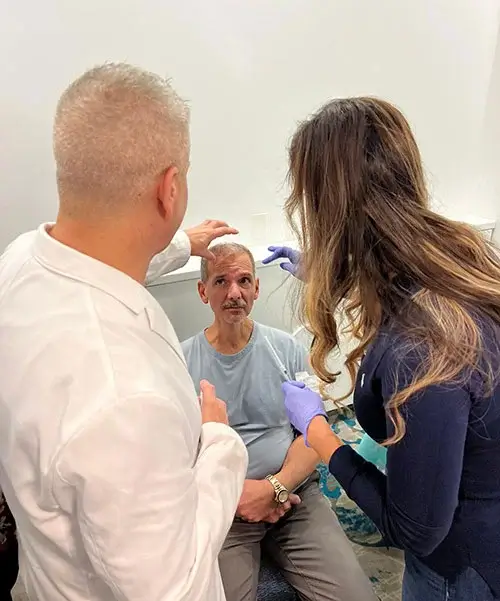Filler Regret? Here’s How to Dissolve It and What to Expect
By Dr. Stephen Cosentino
PRESIDENT OF EMPIRE MEDICAL TRAINING
If you’re not satisfied with the results of your most recent cosmetic procedure or concerned about the side effects, are you out of luck?
Not if your procedure involved hyaluronic acid, the most common type of filler. Hyaluronic acid fillers can be dissolved in minutes using the enzyme hyaluronidase. But this reversal procedure requires professional supervision.
Here’s what you need to know.
How to Dissolve Dermal Filler
The hyaluronic acid filler dissolving process uses hyaluronidase. Like hyaluronic acid itself, it’s a naturally occurring enzyme found in the human body.
Much of the filler dissolves within minutes after initial injection. However, full reversal can take a day or two.
Note that hyaluronidase may break down naturally occurring hyaluronic acid in nearby connective tissues as well, causing temporary volume loss. Fortunately, it should fully regenerate within two to three months at most.
Hyaluronidase Risks
Like hyaluronic acid filler, hyaluronidase is considered low-risk when properly injected. However, there’s a chance of an allergic reaction, especially in patients with a history of allergic reactions to bee and wasp stings.
Providers guard against this by doing a topical patch test on a small area of the skin (usually the arm) before injecting the hyaluronidase. Patients who experience a reaction aren’t good candidates for hyaluronidase.
It’s always best to work with a board-certified plastic surgeon, dermatologist, or other licensed medical provider who has completed dermal filler training coursework that covers hyaluronidase injections and other reversal measures.
Why Dissolve Filler?
The most common reasons to reverse dermal filler procedures are:
Serious Side Effects & Complications
Rarely, filler is injected into a blood vessel. This can cause necrosis (cell death) and blood clots, and should be treated as an emergency. Hyaluronidase can quickly and safely dissolve filler injected into a blood vessel, but it can’t treat any tissue damage that has already occurred.
Unwanted Results (Unnatural Puffiness, Lumps & Bumps)
Due to unique patient anatomy or injection error, dermal fillers sometimes cause unexpected puffiness or bloating under the skin. Likewise, hyaluronic acid filler may bead up under the skin, forming lumps and bumps called granulomas. Hyaluronidase neutralizes these unwelcome outcomes.
Filler Shifting & Migration
Filler can shift under the skin after injection. Often, this occurs weeks or even months after the initial procedure, but well before the filler results would naturally fade.
Patient Dissatisfaction
Sometimes, patients just aren’t happy with how the procedure turned out. They dissolve the filler to restore their pre-procedure appearance, then try again.
How Much Does It Cost to Dissolve Filler?
Often, it costs nothing to dissolve previously injected filler. If the results aren’t as expected or undesirable side effects occur, the provider may offer to inject hyaluronidase to keep the patient happy and avoid a negative review.
However, this isn’t assured. And patients often hesitate to return to the same office that gave them a bad experience the first time around. If they seek out a second provider to reverse the procedure, they may need to pay for it. Typically, the expense is smaller than an initial dermal filler procedure, on the order of $500 or less.


